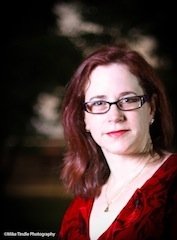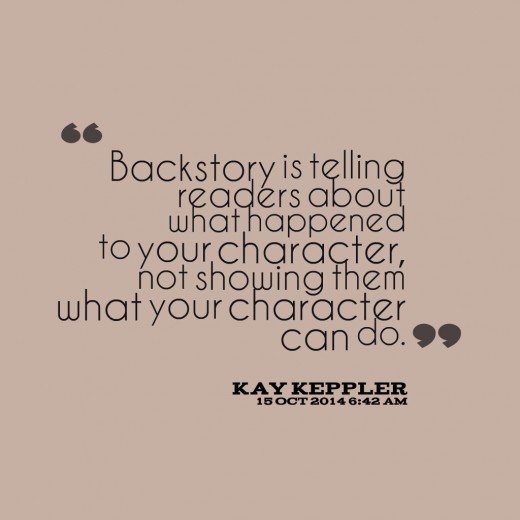Choosing Your Publishing Path by Jami Gray
 Let’s welcome back monthly columnist Jami Gray as she shares with us “Choosing Your Publishing Path.” Enjoy!
Let’s welcome back monthly columnist Jami Gray as she shares with us “Choosing Your Publishing Path.” Enjoy!
***
You’ve finished your first novel, sent it through the wringer of your critique group or chosen beta readers, and tweaked it again and again. Nerves rioting, you’ve decided set it free into the reading world. You’re standing in the open doorway and the paths before you are numerous. You notice a passing author out for a stroll with their third, or was it tenth, book at their side. You clear your throat and timidly ask, “Which road is the one to Publication City?”
I’ve been that strolling author, and I’ve been the one standing in the doorway, and I’m here to share that a writer’s path to publication is full of construction zones, dead ends, twists and turns. This translates to: there is no one, correct answer to this question. Your shoulders are drooping, but chin up, because while your mind is plowing through the negatives of this answer, there are unlimited possibilities in those meandering roads in front of you.
Today’s publishing industry is a wondrous, nerve-wracking jungle. Today, writers can individualize their paths to publication, and eventual success. Just because it takes Reggie Regency four books to hit traction, Polly Paranormal may need five, or Tommy Thriller may hit a homerun with his first book, none of their choices are wrong or right when it comes to you.
Whether you decide to go the traditional route of luring in an agent, clawing your way into one of the Big 5 publishers, bust your butt into one of the newer boutique or e-book houses, or decide to grit your teeth and dive into the deep end of indie-ing it, your path is yours to win or lose.
I’m sure you’re thinking, “Great, but how does this help me?” All I can do is share my path, and ask for other visiting authors who stop by today, to share their experiences. The writing community is a font of information and lessons learned. Take away what works for you, leave the rest for the next worried writer to stumble across.
There are advantages to whatever route you chose. Here are some things to consider as you determine which path to start out on:
If you manage to nab one of the Big 5, remember, you are one of many new authors coming aboard. Their marketing budget is not big enough for all of you. Therefore, that marketing you’d have to do with a smaller publisher, you’re still stuck doing. Be prepared to share your earnings with the publisher, which means you’re looking at maybe 15-20% royalties. The good part, you’re going to have access to a great pool of potential readers, once your books hit shelves 18-24 months after you sign that contract.
If you’re looking to do it on your own, make sure you invest wisely in editors (you need at least two), proofreaders, cover artists, and formatters. Yes, you’ll be laying out cash ahead of the game, but the hope is to recoup that in the end, since most of your royalties belong to you (minus your booksellers’ costs). Build your audience ahead of time, get them pumped for your upcoming release. You’re diving into the deep end, and there are tons of other fishes out there ready to nab that bait.
If you decide to go with a smaller publisher, you’ll find a variety of challenges, so do your research. Reach out to their current authors to see how those relationships are. Marketing is still on you, but chances are, your house will be able to help guide you through the maze of options. Your reader pool will be smaller, but I promise, over time it will grow. You share your royalties with your house, and bring home 25%-40%. You may or may not have input with your cover artist, but you can be assured their editors will do their best to help polish your story.
And should you go the way of the agent, no harm in that. They can step in where you may not be able to: get your book into the Big 5, assist with marketing, finagle those foreign market and movie rights, and help tweak your work into its shiny best. They share your profits, so they’re invested in helping you.
It doesn’t matter which path you choose, so long as it works for you and your goals. Just be prepared to adjust your path as you continue your journey, because no one path remains the right one forever.
***
ABOUT THE AUTHOR
 Jami Gray is the award winning, multi-published author of the Urban Fantasy series, The Kyn Kronicles, and the Paranormal Romantic Suspense series, PSY-IV Teams. Surrounded by Star Wars obsessed males and two female labs moonlighting as the Fur Minxes, she escapes by playing with the voices in her head.
Jami Gray is the award winning, multi-published author of the Urban Fantasy series, The Kyn Kronicles, and the Paranormal Romantic Suspense series, PSY-IV Teams. Surrounded by Star Wars obsessed males and two female labs moonlighting as the Fur Minxes, she escapes by playing with the voices in her head.
If you want to hunt her down, she can be found lurking around the following cyber locations:
Website: www.JamiGray.com
Facebook: https://www.facebook.com/jamigray.author
Twitter: https://twitter.com/JamiGrayAuthor
Goodreads: http://www.goodreads.com/JamiGray
Google+: https://google.com/+JamiGray
Amazon Author Page: http://amzn.com/e/B006HU3HJI







It’s a crazy world in publishing right now. Especially if you cross genres in your book. I found that while Sarah Wendell of Smart Bitches, Trashy Novels said she wished for more romances with magic, none of the big five have a place for that kind of genre cross. Most of the ones I am reading like that are self published.
Hey Susan, I had a similar conversation with another writer friend about the impact of a publisher’s name for readers. I’m sure there are studies out there somewhere, but I know as an avid reader, I notice publishers because, well, I’m a writer. But if you have a reader, do you think they’re out there checking who published the book or are they more concerned with the writing quality and story elements? I tend to like magic and romance and know many who feel the same, so if it’s true the Big 5 don’t have a place for that, they’re missing out a vital part of the market.
Susan, I write magical contemporary romance and am self-publishing. It’s an up and coming subgenre within romance that i know readers enjoy.